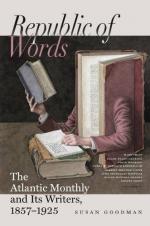The old Dutch traders, with the instinct of their Holland habitudes, clung to the water-side, and therefore their domiciles long extended at angles with what subsequently became the principal avenue of the settlement; and until 1642 Pearl Street was the fashionable quarter. Meantime, where now thousands of emigrants daily disembark, and the offices of ocean steamships indicate the facility and frequency of Transatlantic travel, the Indian chiefs smoked the pipe of peace with the victorious colonists under the shadow of Fort Amsterdam, and the latter held fairs there, or gathered, for defence and pastime, round the little oasis of the metropolitan desert where carmen now read “The Sun.” No. 1 was the Kennedy House, subsequently the tavern of Mrs. Koch,—whose Dutch husband was an officer in the Indian wars,—and was successively the head-quarters of Clinton, Cornwallis, and Washington, and at last the Prime Mansion; and farther up was Mrs. Ryckman’s boarding-house,—genial sojourn of Irving, and the scene of his early pen-craft and youthful companionships, when “New York was more handy, and everybody knew everybody, and there was more good-fellowship and ease of manners.” Those were the days of ropewalks and “selectmen,” of stage-coaches and oil-lamps. The Yankee invasion had scarcely superseded the Knickerbocker element. The Free Academy was undreamed of; and the City Hotel assemblies were the embryo Fifth Avenue balls. An old Directory or a volume of Valentine’s Manual, compared with the latest Metropolitan Guide-Book and Trow’s last issue, will best illustrate the difference between Broadway then and now.
But it is not so much the more substantial memorials as the “dissolving views” that give its peculiar character to the street. Entered at the lower extremity by the newly-arrived European, on a rainy morning, the first impression is the reverse of grand or winsome. The squalor of the docks and the want of altitude in the buildings, combined with the bustle and hubbub, strike the eye as repulsive; but as the scene grows familiar and is watched under the various aspects produced by different seasons, weather, and hours of the day, it becomes more and more significant and attractive. Indeed, there is probably no street in the world subject to such violent contrasts. It is one thing on a brilliant and cool October day and another in July. White




